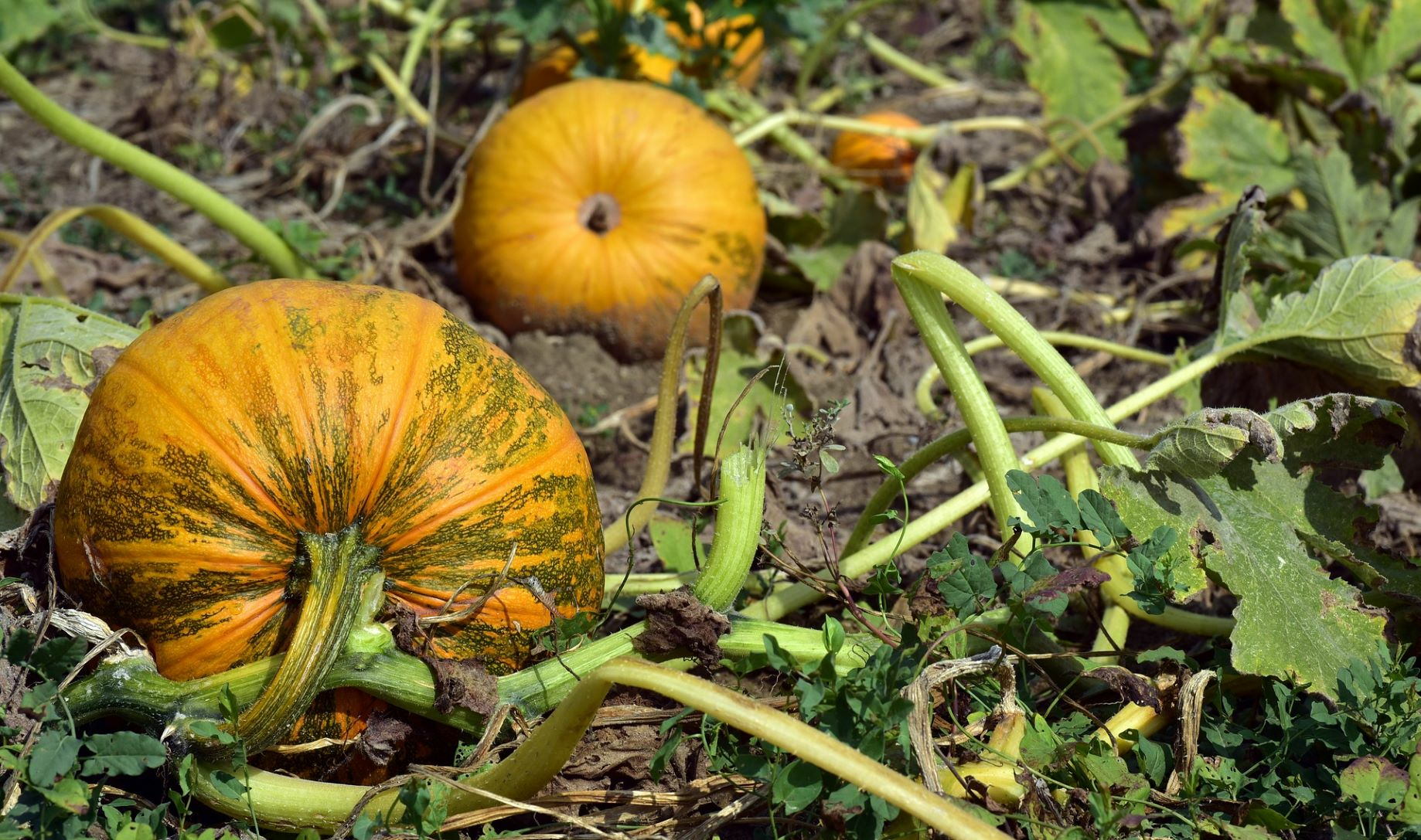
Planting Pumpkins: Tips for Cultivation, Care & Harvesting
Pumpkin plants are uncomplicated and easy-care crops that are very popular in kitchens and hobby gardens. They are easy to grow and care for. Their high content of minerals and vitamins, combined with their long shelf life, makes them a real goldmine for the winter, especially for self-sufficient gardeners. We give you helpful tips on everything from sowing pumpkins to care instructions, harvesting and storage. There are also instructions for planting pumpkins.
This Article Contains:
- Planting Pumpkins in the Garden
- Planting Pumpkin: Location & Soil
- Grow Your Own Pumpkins
- Planting Pumpkins: From the Windowsill to the Outdoors
- Growing Pumpkins on the Balcony
- Things to Bear in Mind When Caring for Pumpkins
- Mixed Culture With Pumpkin
- The Most Common Diseases in Pumpkin Plants
- Harvesting and Storing Pumpkins
- Propagate Pumpkin
- Frequently Asked Questions About Planting Pumpkins
Quick Overview
Planting Pumpkins: Location, Sowing and Planting
- Light requirement: sunny
- Nutrient requirements: high
- Water requirement: high, no waterlogging
- Soil: nutrient-rich, humus-rich soil
- Germination temperature: 20 - 24 °C/68 - 75 °F
- Sowing: 2 - 3 cm/0.8 - 1.2 in
- Planting out: after the Ice Saints, in May
- Planting depth: 2 - 3 cm/0.8 - 1.2 in
- Planting distance: 1.5 - 2.5 m/1.6 - 2.7 yd x 0.5 - 1.5 m/0.5 - 1.6 yd, depending on the growth habit of the variety
Planting Pumpkins in the Garden
Pumpkins belong to the gourd family (Cucurbitaceae). The fruiting vegetable usually grows as an annual in our latitudes and forms its fruit on more or less climbing shoots. The herbaceous plant either grows as a climber or creeps along the ground.
The pumpkin plant produces beautiful golden yellow flowers from June to August. All pumpkins are monoecious. This means that each flower is either purely male or female. The flowers are usually large and have an eye-catching flower cup. They can be easily distinguished from each other externally. The female flowers already have a fruit set directly below the flower. The male flowers sit on a thin, hairy stalk. However, the male flowers can also be used in the kitchen and are a delicacy from your own garden.
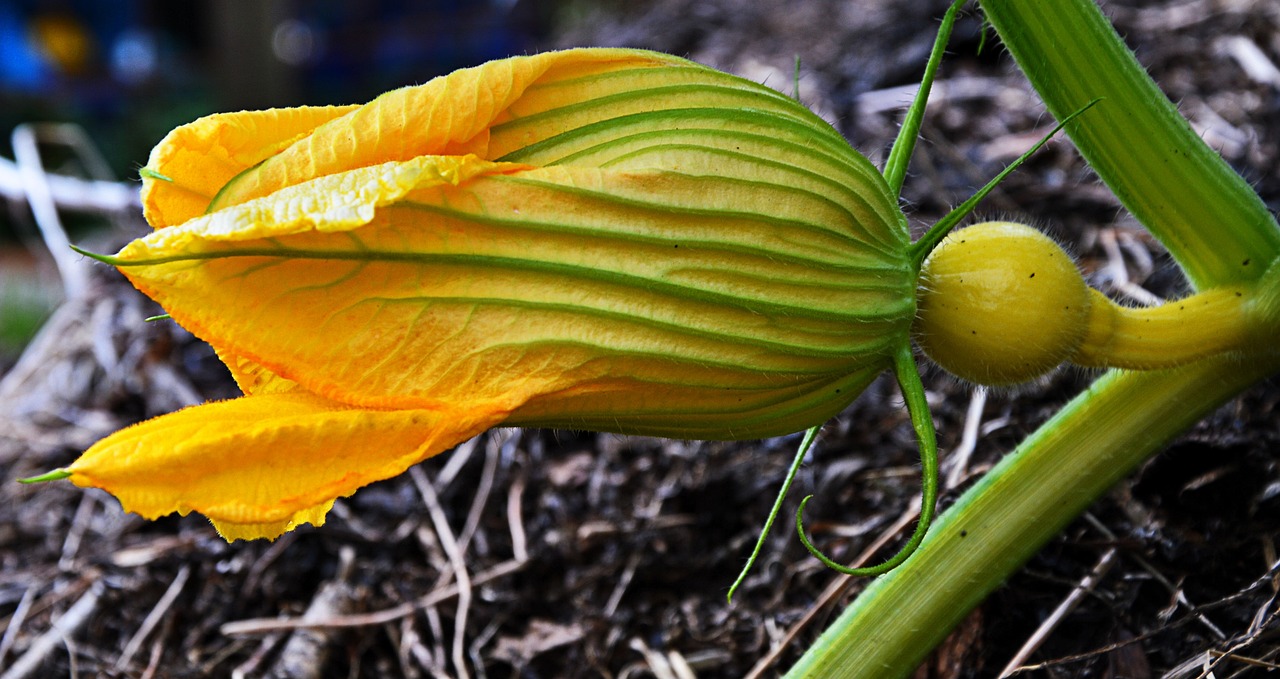
The pumpkin plant originally comes from Central and South America. Even ancient cultures were aware of the added value of the pumpkin, whether as a source of minerals and vitamins in the diet or as a partner for plants in a mixed culture.
Planting Pumpkin: Location & Soil
Optimal Soil Conditions for Pumpkins
Depending on the variety, pumpkins need a lot of space and thrive best in deep, humus- and nutrient-rich soil. They are heavy feeders and therefore need a lot of nutrients to grow. Therefore, prepare the soil well with compost. The pumpkin plant is not particularly picky when it comes to soil type, however, and thrives in both loamy and sandy soils. On sandy soils, however, you need to keep a close eye on it to ensure that it does not dry out.
The Right Location for Pumpkin Plants
In general, a sunny but sheltered location is ideal for growing pumpkins. Pumpkin roots are quite easy to break. In strong winds, the large leaves are moved, which can lead to damage to the root system, particularly in young plants, and therefore to reduced growth.
For example, a place at the foot of a compost heap is ideal. The pumpkin's large leaves provide shade and prevent the compost from drying out. The pumpkin plant itself benefits from the nutrient-rich leachate and the warmth of the compost.
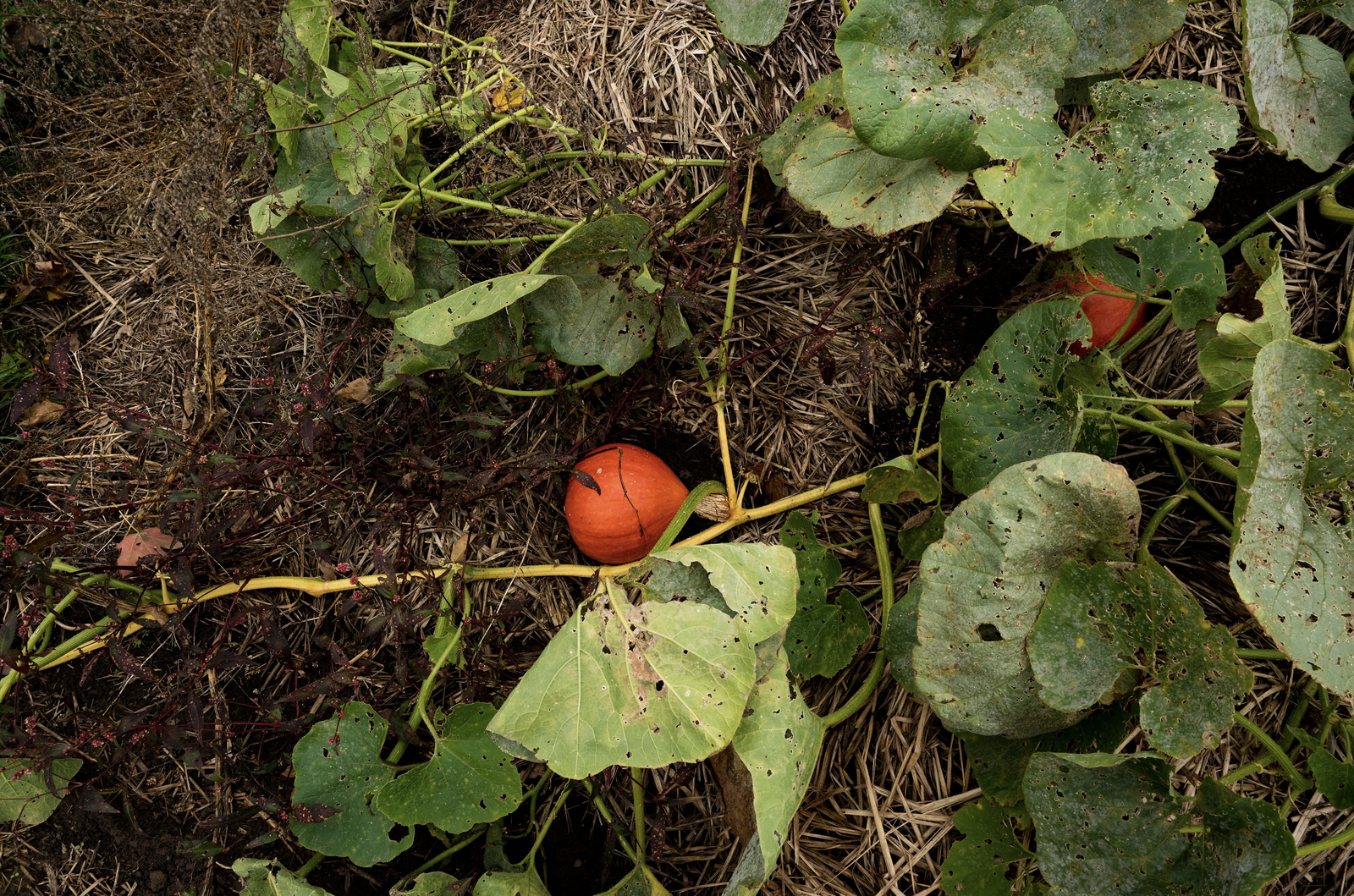
Finding the Right Pumpkin Variety
From a botanical point of view, pumpkins are actually berries. In fact, the pumpkin is the plant with the largest berries and seeds that we know of. These berries are called armored berries. They have a tough and robust shell that reliably protects the flesh containing the nutrient- and oil-rich pumpkin seeds. Their shape, size, color and taste can vary greatly depending on the variety.
With a selection of over 850 varieties of different edible and ornamental pumpkins, there is something for everyone. If you are still unsure which pumpkin you would like to plant, you can find an overview of the most popular Edible Pumpkin Varieties for the Hobby Garden or Balcony Here.

Discover Numerous Pumpkin Varieties Now
In our library you will find information on the individual varieties with cultivation periods, tips on planting and harvesting. You will also find companion plants to help you plan a mixed crop.
View Library NowGrow Your Own Pumpkins
Due to their tropical origin, pumpkins are heat-loving plants. For this reason, it is advantageous to grow them at home on the windowsill in our latitudes. After the Ice Saints, the plants can then be taken outside. At temperatures below 5 °C/41 ° F, the development of the young plants and ultimately your harvest will suffer from the lack of warmth. If you live in a warmer area, you can also sow your pumpkin seeds directly outdoors. In our article on this topic, you will find all the information you need on Sowing Pumpkins and what to bear in mind when pre-growing and direct sowing.
Planting Pumpkins: From the Windowsill to the Outdoors
Hardening Pumpkin Plants
Before you can plant your pumpkins in the bed, you absolutely must harden them off! To do this, place the young plants outside for a few hours every day to acclimatize them to environmental influences and the weather. You should put them outside every day for about a week, leaving them outside a little longer each day. To prevent the leaves from burning in the sun, find a shady spot at the beginning. After a few days, however, you can place them directly in the sun.
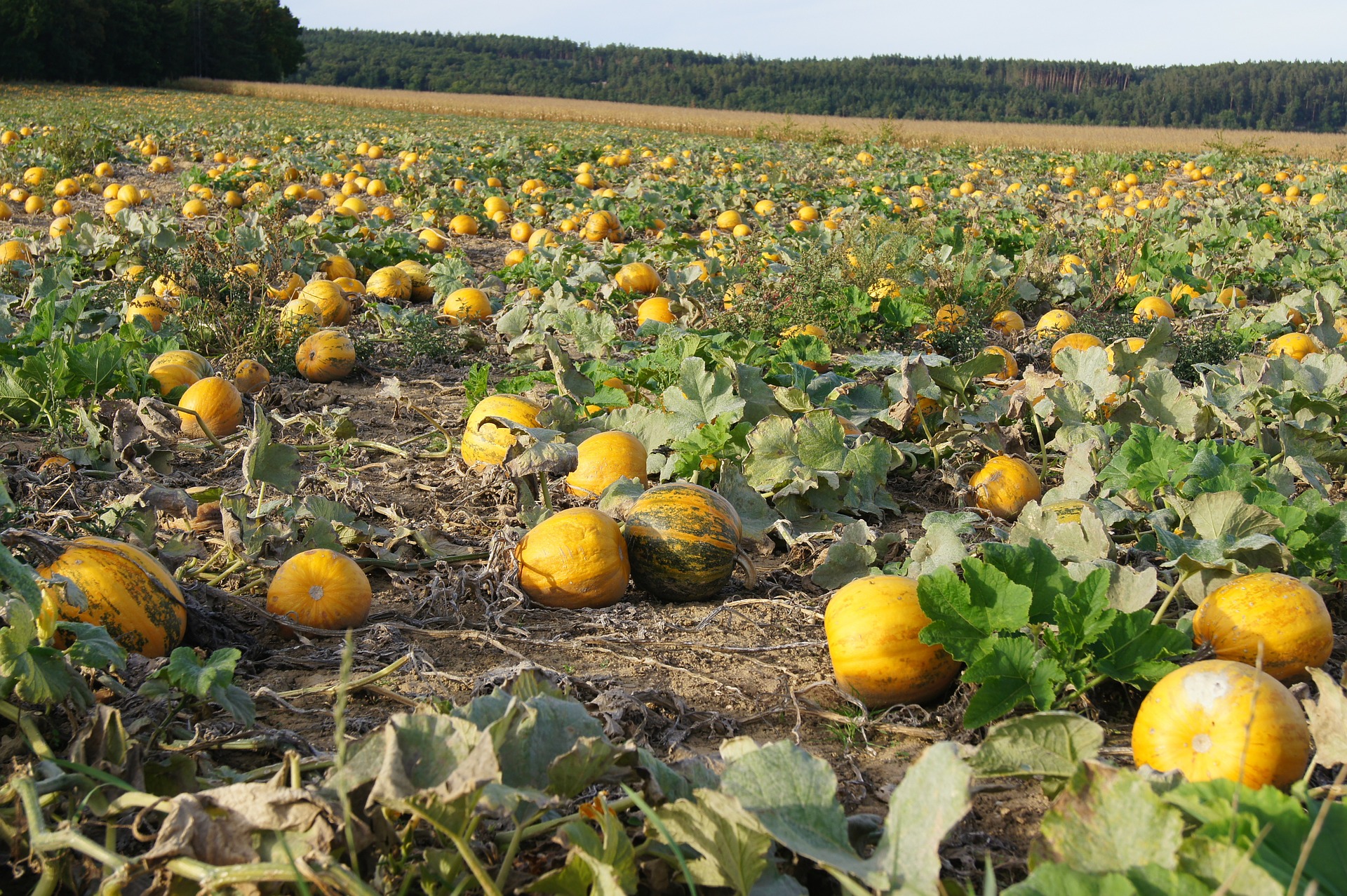
Preparing the Pumpkin Patch
To prepare the soil, loosen it well and prepare it with compost or manure. If you live in a cooler area, you can also mound up the soil and cover it with black foil. This film can be made of plastic, but a film made of degradable material would be better. With plastic sheeting, you run the risk of it decomposing over time and leaving microplastics in your garden soil. The black film attracts more heat and less water evaporates. This is particularly good for the heat- and moisture-loving pumpkin. The foil also suppresses unwanted weeds that compete with the shallow-rooted pumpkin. Slits are then cut at the planting sites where you can later plant the young plants.
Planting Out Pumpkins: How to Do It
Young plants that have two to three well-developed leaves and a well-developed root ball are ready to be moved outdoors. Plant them in the prepared soil, placing them deeper in the ground than before. Pumpkin plants form new roots (adventitious roots) where the stem is under the soil, giving them more stability. This is particularly beneficial for the large leaves, which are easily moved by wind or other environmental influences. Finally, water the plant well and apply a mulch layer of straw. The row spacing for pumpkin plants should be relatively wide and you should give them at least 1.5 to 2.5 m/1.6 to 2.7 yd between the rows and 0.5 to 1.5 m/0.5 to 1.6 yd in the row . With pumpkin plants, depending on the variety and growth habit, it is important to give the individual plants enough space so that they set and form enough fruit.
Growing Pumpkins on the Balcony
Pumpkins can also be grown on the balcony. Small-growing varieties, such as the mini Hokkaido Zora or the Butternut Waltham, are particularly suitable for this. After pre-cultivation from mid-April, the young plants can be moved to the balcony four weeks later. The pumpkin plant requires a large pot with a volume of 60 to 90 L/53 to 79 qt, filled with a nutrient-rich substrate and enriched with plenty of compost. Pumpkins are also very sensitive to waterlogging. The water should always be able to drain well. Before planting out, acclimatize your pumpkin plants to the outdoor climate and place them on the balcony for a few hours every day. The location for hardening off should be sheltered from the wind and semi-shaded. After about a week, you can plant the young plant in the large pot and place it in a sunny but sheltered spot.
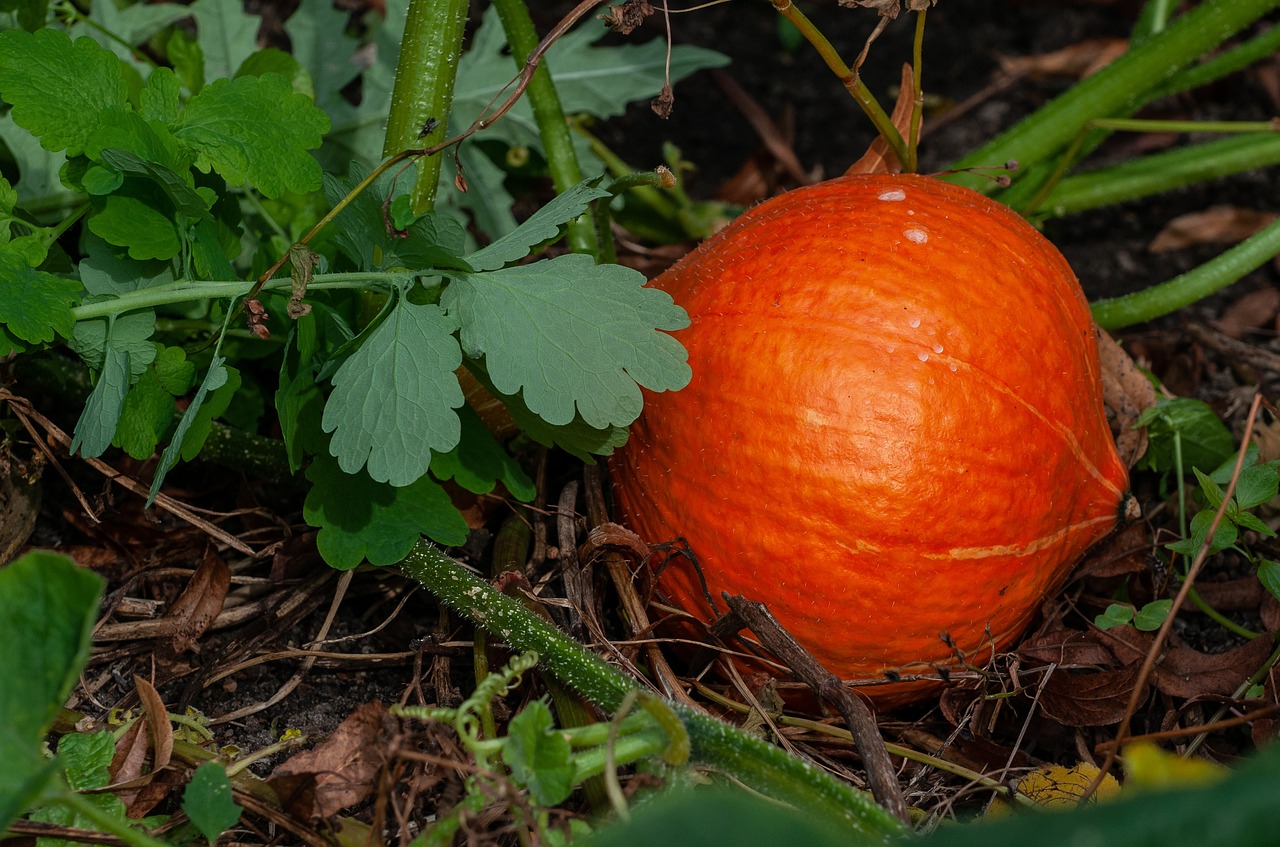
Things to Bear in Mind When Caring for Pumpkins
Although care is not complicated, there are a number of care measures that you should know and follow to keep your pumpkin plants healthy. To get an overview of what you can do for your pumpkins, you can find all the important information in our article on the Correct Care of Pumpkins.
Mixed Culture With Pumpkin
Pumpkin plants are ideal for mixed cultivation. Probably the best-known mixed crop with pumpkin is the milpa. In a Milpa Bed, you plant beans, corn and pumpkin together.
However, there are many other good companions with pumpkin. You can find out which plants are good and bad companion plants for pumpkins here. You will also find tips on succession cropping and crop rotation. For inspiration for your own Mixed Cultivation With Pumpkins, you can also find digital bed plans for a mixed cultivation with pumpkins with suitable pre- and post-crops.
The Most Common Diseases in Pumpkin Plants
Fortunately for all amateur gardeners, pumpkins are very robust plants that are not very susceptible to plant diseases. Although they are often affected by Powdery or Downy Mildew in late summer, there are otherwise few diseases to worry about. Even powdery mildew, which leaves a white fungal coating on the plant and the upper side of the leaves, will not harm your harvest.
Harvesting and Storing Pumpkins
The time of harvest depends mainly on whether it is a summer pumpkin with a thin skin or a storage pumpkin, i.e. a winter pumpkin with a thick skin. Summer pumpkins are usually harvested quite young and can therefore not be stored for long. In contrast, storage pumpkins ripen on the plant for a long time and are then dried and stored when fully ripe.
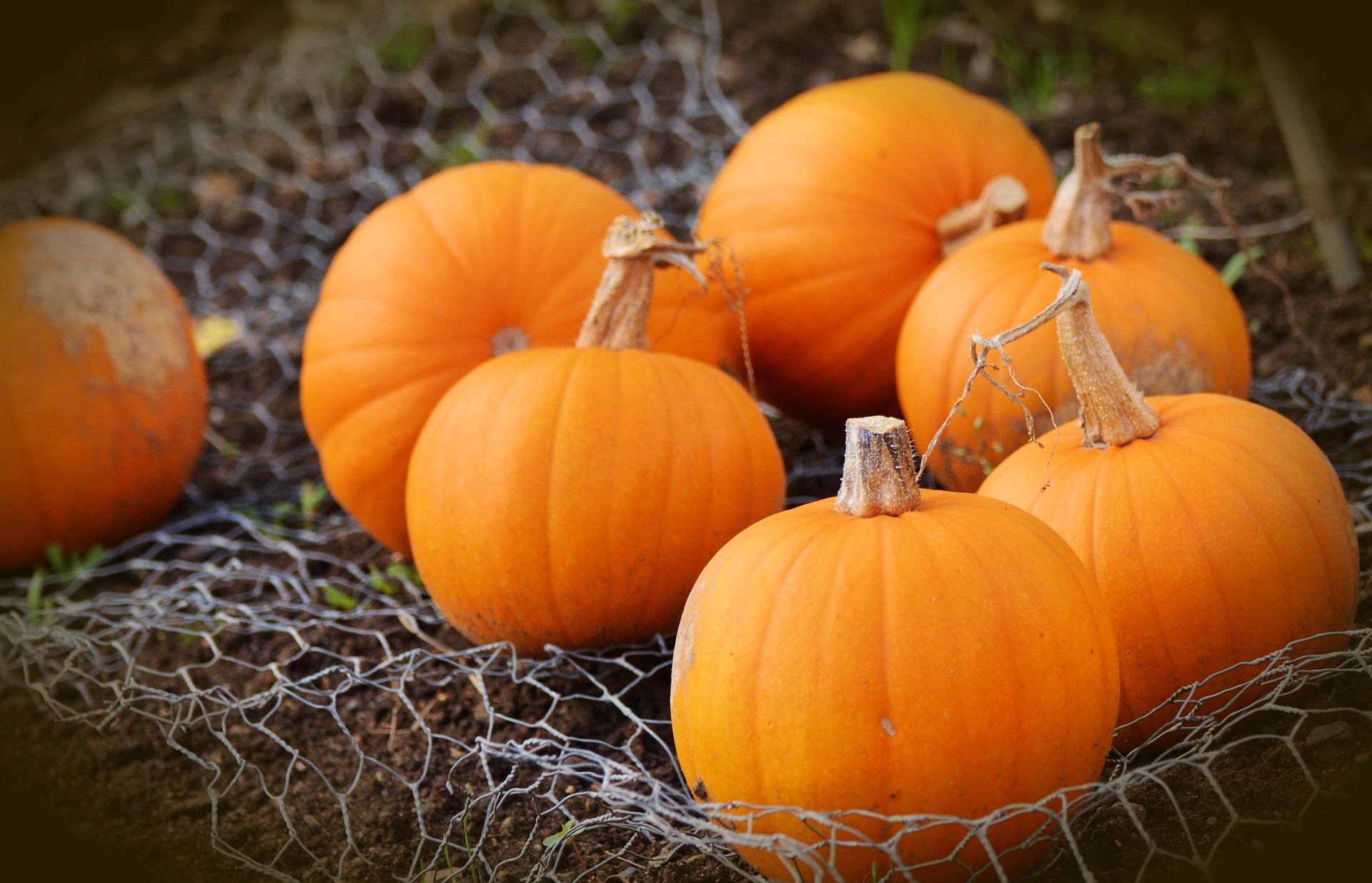
When to harvest pumpkins?
In general, all pumpkins should be harvested before the first frosts. You can find out how to recognize a ripe pumpkin and what else to consider when harvesting in our article Harvesting and Storing Pumpkins. Here you will also find all the important points to consider during storage to ensure you can enjoy your harvest for as long as possible.
Propagate Pumpkin
As you already know, ornamental pumpkins are not edible and are even poisonous to humans. Be careful when propagating pumpkins from seeds that you have collected yourself from an edible pumpkin! Reverse mutations or crosses with wild varieties can result in the plants again containing a harmful amount of cucurbitacin. So if your pumpkin from a home-grown plant tastes bitter, it' s better not to eat it. Fruits with too much bitterness can lead to nausea, vomiting and intestinal problems. It is better to buy seeds. That way, you are on the safe side and can be sure that the pumpkins will be edible and harmless to your health later on.
I hope you have gained an overview of how to grow pumpkins. Try it out in your own garden or on your balcony and tell us about your experiences! If you have any questions, problems or comments, please write to us at magazin@fryd.app.
Want to get helpful gardening tips all year round and plan your own beds in the best possible way? Then register here or download the Fryd app for Android or iOS.
Fryd - Your digital bed planner
Cover image by ulleo from Pixabay.
Marie
Current Topics in the Community

Dec 2025
@pampelpea-1246


@Moderator_and_moderator_moderator_test_app
Show 1 answerPopular Articles

Companion Plants for Carrots: What (Not) to Plant With Carrots

Companion Plants for Celery : What (Not) to Plant With Celery?

Strawberry Types: List of Best Strawberry Varieties

Companion Planting With Strawberries: Companion Plants and Planting Plan

Basil Varieties & Types at a Glance

What to Plant With Cabbage: Good and Bad Companion Plants

Fertilizing Strawberries: Home Remedies & Natural Fertilizers at a Glance

Growing Sweet Potatoes: Tips on Cultivation & Companion Plants

Companion Plants for Kitchen Herbs: Chives, Parsley & Co

What Herbs Can Be Planted Together?
FAQ
Pumpkins should generally be grown indoors in mid to late April.
When is the best time to plant pumpkins?
Pumpkins should be planted out after the Ice Saints in May, as they are sensitive to frost.
What conditions do pumpkins need to grow well?
Pumpkins thrive best in a sunny, sheltered location with deep, humus- and nutrient-rich soil.
How should the soil for pumpkins be prepared?
The soil should be well loosened and enriched with compost. Black foil can be used to store heat and promote growth.
How do you go about caring for pumpkin plants?
Pumpkin plants need regular watering without waterlogging and good fertilization to stay nutrient-rich. Mulching helps to retain moisture and suppress weeds.